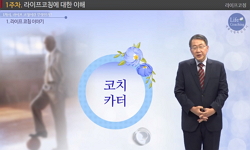Purpose: Several studies have demonstrated that psychiatric disorders such as anxiety, depression and panic attack are associated with syncope, especially vasovagal and unexplained syncope (US). The aim of this study was to compare the prevalence of a...
http://chineseinput.net/에서 pinyin(병음)방식으로 중국어를 변환할 수 있습니다.
변환된 중국어를 복사하여 사용하시면 됩니다.
- 中文 을 입력하시려면 zhongwen을 입력하시고 space를누르시면됩니다.
- 北京 을 입력하시려면 beijing을 입력하시고 space를 누르시면 됩니다.




Prevalence and Clinical Factors of Anxiety and Depression in Neurally Mediated and Unexplained Syncope
한글로보기https://www.riss.kr/link?id=A101617947
- 저자
- 발행기관
- 학술지명
- 권호사항
-
발행연도
2013
-
작성언어
English
-
주제어
Anxiety ; depression ; syncope
-
등재정보
KCI등재,SCI,SCIE,SCOPUS
-
자료형태
학술저널
- 발행기관 URL
-
수록면
583-589(7쪽)
-
KCI 피인용횟수
5
- DOI식별코드
- 제공처
- 소장기관
-
0
상세조회 -
0
다운로드
부가정보
다국어 초록 (Multilingual Abstract)
Purpose: Several studies have demonstrated that psychiatric disorders such as anxiety, depression and panic attack are associated with syncope, especially vasovagal and unexplained syncope (US). The aim of this study was to compare the prevalence of anxiety and depression between patients with neurally mediated syncope (NMS) and US and to investigate the clinical factors associated with anxiety and depression. Materials and Methods: Between January 2009 and March 2010, 383 patients with syncopal episodes completed a Hospital Anxiety and Depression Scale questionnaire to assess symptoms of anxiety and depression. Inclusion criteria were NMS and US. Exclusion criteria were cardiac syncope, orthostatic hypotension and other disorders mimicking syncope. After exclusion, 199 patients were included. Results: There were 176 (88.4%) NMS patients and 23 (11.6%) US patients. The prevalence of abnormal anxiety and depression were not significantly different between the NMS and US groups (10.2% vs. 8.7%, p=0.99; 8.5% vs. 17.4%, p=0.24). Clinical factors associated with anxiety were female gender (p=0.01) and six or more recurrent syncopal episodes (p=0.01) by univariate analysis. The only factor associated with abnormal anxiety score (OR=20.26, 95% CI: 1.4-291.6, p=0.01) was more than six recurrent syncopal episodes, while a positive head-up tilt table testing response was inversely associated with abnormal depression score (OR=0.28, CI: 0.08-0.97, p=0.04) in the multiple logistic regression analysis. Conclusion: Anxiety was associated with frequent syncopal episodes.
Thus, anxiety might be considered in the management of syncope patients.
참고문헌 (Reference)
1 Gracie J, "The role of psychological factors in response to treatment in neurocardiogenic (vasovagal) syncope" 8 : 636-643, 2006
2 Zigmond AS, "The hospital anxiety and depression scale" 67 : 361-370, 1983
3 McGrady A, "Psychological and physiological factors associated with tilt table testing for neurally mediated syncopal syndromes" 24 : 296-301, 2001
4 Linzer M, "Psychiatric syncope: a new look at an old disease" 31 : 181-188, 1990
5 Giada F, "Psychiatric profile, quality of life and risk of syncopal recurrence in patients with tilt-induced vasovagal syncope" 7 : 465-471, 2005
6 Kapoor WN, "Psychiatric illnesses in patients with syncope" 99 : 505-512, 1995
7 Ventura R, "Psychiatric conditions in patients with recurrent unexplained syncope" 3 : 311-316, 2001
8 D’Antono B, "Prospective evaluation of psychological distress and psychiatric morbidity in recurrent vasovagal and unexplained syncope" 67 : 213-222, 2009
9 Kouakam C, "Prevalence and prognostic significance of psychiatric disorders in patients evaluated for recurrent unexplained syncope" 89 : 530-535, 2002
10 Linzer M, "Medically unexplained syncope: relationship to psychiatric illness" 92 : 18S-25S, 1992
1 Gracie J, "The role of psychological factors in response to treatment in neurocardiogenic (vasovagal) syncope" 8 : 636-643, 2006
2 Zigmond AS, "The hospital anxiety and depression scale" 67 : 361-370, 1983
3 McGrady A, "Psychological and physiological factors associated with tilt table testing for neurally mediated syncopal syndromes" 24 : 296-301, 2001
4 Linzer M, "Psychiatric syncope: a new look at an old disease" 31 : 181-188, 1990
5 Giada F, "Psychiatric profile, quality of life and risk of syncopal recurrence in patients with tilt-induced vasovagal syncope" 7 : 465-471, 2005
6 Kapoor WN, "Psychiatric illnesses in patients with syncope" 99 : 505-512, 1995
7 Ventura R, "Psychiatric conditions in patients with recurrent unexplained syncope" 3 : 311-316, 2001
8 D’Antono B, "Prospective evaluation of psychological distress and psychiatric morbidity in recurrent vasovagal and unexplained syncope" 67 : 213-222, 2009
9 Kouakam C, "Prevalence and prognostic significance of psychiatric disorders in patients evaluated for recurrent unexplained syncope" 89 : 530-535, 2002
10 Linzer M, "Medically unexplained syncope: relationship to psychiatric illness" 92 : 18S-25S, 1992
11 Ganzeboom KS, "Lifetime cumulative incidence of syncope in the general population: a study of 549 Dutch subjects aged 35-60 years" 17 : 1172-1176, 2006
12 Flint B, "Level of psychosocial impairment predicts early response to treatment in vasovagal syncope" 11 : 231-236, 2009
13 Linzer M, "Impairment of physical and psychosocial function in recurrent syncope" 44 : 1037-1043, 1991
14 Moya A, "Guidelines for the diagnosis and management of syncope (version 2009)" 30 : 2631-2671, 2009
15 Savage DD, "Epidemiologic features of isolated syncope: the Framingham Study" 16 : 626-629, 1985
16 Brignole M, "Carotid sinus massage, eyeball compression, and head-up tilt test in patients with syncope of uncertain origin and in healthy control subjects" 122 : 1644-1651, 1991
17 Runkewitz K, "Anxiety and depression in primary care patients: predictors of symptom severity and developmental correlates" 60 : 445-453, 2006
18 Cohen TJ, "An association between anxiety and neurocardiogenic syncope during head-up tilt table testing" 23 : 837-841, 2000
19 Yun YH, "Age, sex, and comorbidities were considered in comparing reference data for health-related quality of life in the general and cancer populations" 60 : 1164-1175, 2007
동일학술지(권/호) 다른 논문
-
Quantitative Analysis of Simultaneous EEG Features during PET Studies for Childhood Partial Epilepsy
- 연세대학교의과대학
- 허윤정
- 2013
- KCI등재,SCI,SCIE,SCOPUS
-
- 연세대학교의과대학
- 남종길
- 2013
- KCI등재,SCI,SCIE,SCOPUS
-
- 연세대학교의과대학
- 김태현
- 2013
- KCI등재,SCI,SCIE,SCOPUS
-
- 연세대학교의과대학
- 김진평
- 2013
- KCI등재,SCI,SCIE,SCOPUS
분석정보
인용정보 인용지수 설명보기
학술지 이력
| 연월일 | 이력구분 | 이력상세 | 등재구분 |
|---|---|---|---|
| 2023 | 평가예정 | 해외DB학술지평가 신청대상 (해외등재 학술지 평가) | |
| 2020-01-01 | 평가 | 등재학술지 유지 (해외등재 학술지 평가) |  |
| 2011-01-01 | 평가 | 등재학술지 유지 (등재유지) |  |
| 2009-01-01 | 평가 | 등재학술지 유지 (등재유지) |  |
| 2007-01-01 | 평가 | 등재학술지 유지 (등재유지) |  |
| 2005-05-31 | 학술지등록 | 한글명 : Yonsei Medical Journal외국어명 : Yonsei Medical Journal |  |
| 2005-01-01 | 평가 | 등재학술지 유지 (등재유지) |  |
| 2002-01-01 | 평가 | 등재학술지 선정 (등재후보2차) |  |
| 2000-01-01 | 평가 | 등재후보학술지 선정 (신규평가) |  |
학술지 인용정보
| 기준연도 | WOS-KCI 통합IF(2년) | KCIF(2년) | KCIF(3년) |
|---|---|---|---|
| 2016 | 1.42 | 0.3 | 0.99 |
| KCIF(4년) | KCIF(5년) | 중심성지수(3년) | 즉시성지수 |
| 0.83 | 0.72 | 0.546 | 0.08 |




 KCI
KCI







